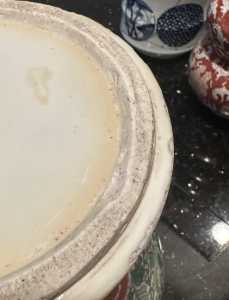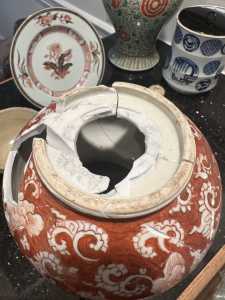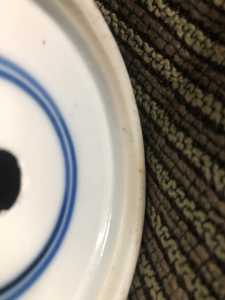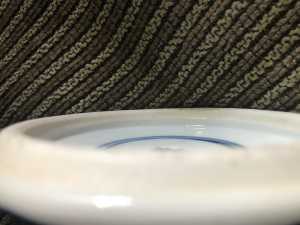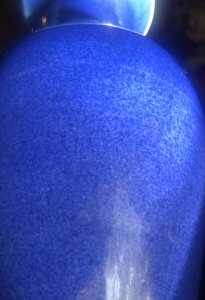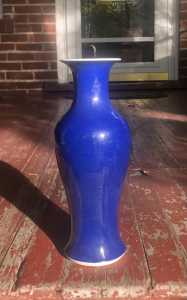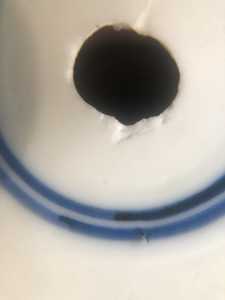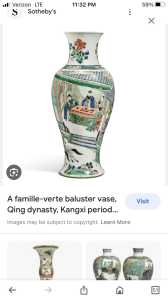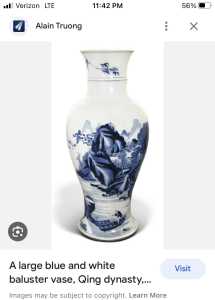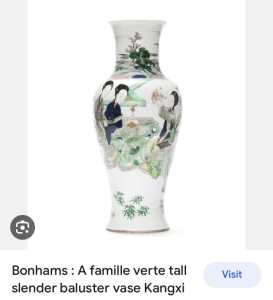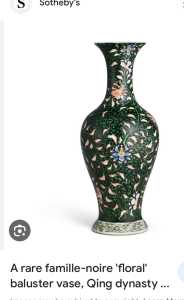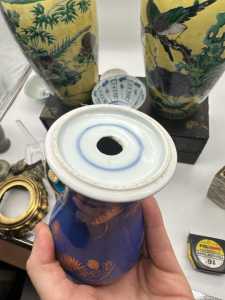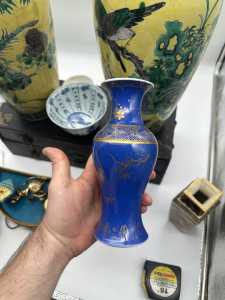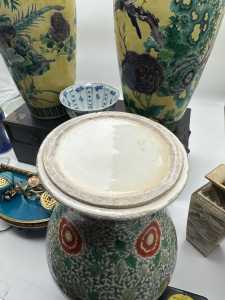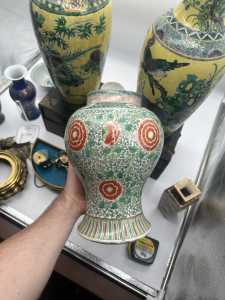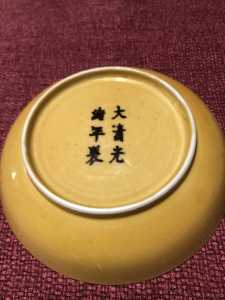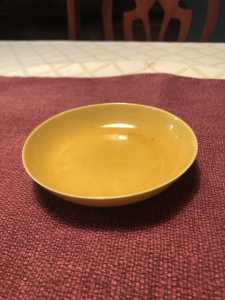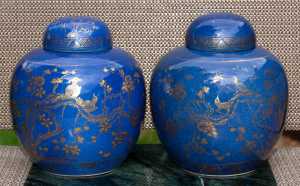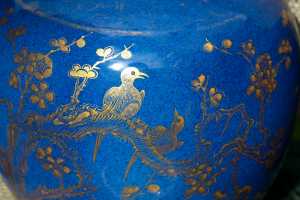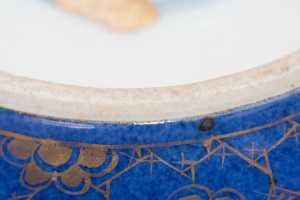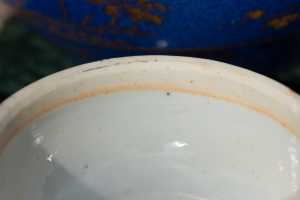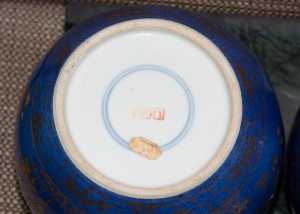The Chinese and Asian Art Forum. For Fans, Collectors and Dealers.
 Basic Rules For the BidAmount Asian Art Forum: Talk about whatever you want. You can even discuss and offer things that are for sale if they are authentic. Maximum image file size per post is 2 MB. Images of 700pxl x 700pxl are optimal if saved at a medium resolution. Be respectful of others and enjoy yourself. Click the YouTube link for a brief tutorial on using the forum. You can also EMBED Videos by cutting and pasting from You-Tube, Vimeo etc.
Basic Rules For the BidAmount Asian Art Forum: Talk about whatever you want. You can even discuss and offer things that are for sale if they are authentic. Maximum image file size per post is 2 MB. Images of 700pxl x 700pxl are optimal if saved at a medium resolution. Be respectful of others and enjoy yourself. Click the YouTube link for a brief tutorial on using the forum. You can also EMBED Videos by cutting and pasting from You-Tube, Vimeo etc.
NOTE: To post an item or add a new post, click open the category title from the FORUM LIST, and CLICK the Blue ADD TOPIC button.
I agree with the others, the trimming and the shape of the vase overall looks late 19th-20th. Even with such nice paste, which does occasionally pop up on these later examples, its just not a match for Kangxi. Still a great color and overall very decorative.
Here are two lipped feet, unfortunately both were ground down to fit mounts, but pay attention to where the glaze ends on the inside the foot rim, and the overall proportions. Later examples it is trimmed lower. The shattered vase is Kangxi, the Famille verte one is late 19th.
Just a suggestion for photographing the shape of the vase better, step back liike three or five feet and take a picture, with the focus on the upper rim, most cameras will warp the shape other wise.
then compare it to the shapes here, not the best pictures but you can see the shapes. Just note that you cannot compare the overall form of a 12cm vase to a 48cm vase and vise versa, they were differently proportioned.
https://guimet-grandidier.fr/html/4/index/index.htm
Cheers,
Jeremy
@jbeer2121 Thank you so much for your response, Jeremy. I’m happy if it’s late 19th early 20th. You are right about the paste, nice and dense and fairly white. I’m a little confused about your comment on the inside glaze. I’m adding some pictures to show where the glaze stops, almost halfway up the inside foot. It seems your 19thC one doesn’t go up the side at all and the broken Kangxi one goes halfway up like mine. Am I seeing that wrong? Again, not saying mine is Kangxi.
@jbeer2121 continuing my response above, I was mostly curious for the next Kangxi vase I find, haha. Also, when I stick my fingers inside the mouth of the vase there's a very large ridge inside there, although you wouldn't know it by looking at the outside. Is that further indication it would be late 19th early 20th or is that both Kangxi and 100 years ago? I'm supposing both so that would be no indicator either way?
@lotusblack thank you so much. If not powder blue, what might it be called, just monochrome blue? Attached photo in more light. I do notice that almost all Kangxi baluster necks seemed longer and feet flatter. I feel a large ridge inside at the bottom of the neck, but can’t tell from looking at it that it’s there. Ribs are barely noticeable on my vase.
@centralpapottery these pictures make this look like powder blue the others made it look like blue glaze.
These are better pictures of the foot and yes the glaze goes up higher than I had thought. In similarly bright lighting can you photograph this vase from the side a few feet away so we can see the shape.
Still looks later, shape wise from what I can see so far, though that foot looks very very nice( I could definitely see it as 18th century assuming the texture fits the period too), I just don't see such weak shoulders on an early 18th century vase. Again though this is hard to tell without properly lit and not warped pictures.
as far as the ridge, It depends where you are talking about, the neck is usually luted on to the body, and occasionally there is a luting line at the belly. There are various ringed necks and ridges on vases through out the periods, I don't know how that would date it.
Jeremy
@jbeer2121 hopefully this picture is better. Let me know if I need to redo. It’s from about 3 feet away and camera at the rim. I believe with most everyone else that mine is 1880-1920 era. The foot is amazing, as you pointed out. And the paste is dense and white as can be seen on a closeup of the chipping around the hole I’ll attach. Very white.
I found other Kangxi “weak” shoulders, but I don’t believe any had a flared rim like mine. I’ll try to attach some links later.
Do the proportions look the same as yours?
I recently posted two late Qing Famille Jaune vases, and in my search to try and explain why the decoration is so abstract on one and standard on the other, I found three Kangxi mark and period examples, same form and damn near identical proportions. That is three out of over a hundred total. I can tell you that in no way do I think that mine are Kangxi.
The ones you show just now are undoubtedly taller than yours, at least 40cm, one or two that I did find is 45cm plus.
These are different proportions, they are different sizes, they are certainly more balanced looking to my eyes, except the form of the tall slender one at the end, I've seen one of those in person, its like comparing an emu to a chicken shape wise.
If I walked by yours at an estate sale, a thrift sore, or hell even a gallery, my first thought would be "wow! what a great late Qing powder Blue", and I'd buy it if it were less than a couple hundred bucks, since I know that I could sell it.
I will follow this up with two revival vases, one belongs to John Guerrero from the forum, it was posted here a while ago, it is powder blue and late 19th early 20th. And the second is mine, and is the bottom half of a yen yen most likely, and despite their faithful attempts to copy a kangxi vase( they did a hell of a job I'd say), its off, the paste, the shape isn't balanced enough, the enamels, its not right.
You have a good quality revival vase, I'd mount it back up and use it or sell it.
Cheers,
Jeremy
@jbeer2121 nice. I'd say the blue shape is pretty much exact. But mine seems larger at 30 cm. And his outer foot is larger than mine it seems... a bigger hump or whatever you would call it outside the inner foot. Your vase has that flat foot, which probably makes it even harder to tell. Thanks so much for your time and expertise. And as I mentioned, I couldn't find one Kangxi, this shaped, baluster vase that had a flared rim.
For sure, I think its hard when you look for why it might be said period rather than why its not. There are a select few pieces where I am utterly convinced, because the main things are right, like 95% right, and then you might have an outlier. But the chances are slim still, and you might not get anyone to accept it.
Jeremy
@jbeer2121 no doubt.
That’s why I keep these photos close. Everything felt right accept many said it couldn’t be because of the mark. I almost gave up on it being authentic because of that major issue until Brian C. showed one with the same thick mark that was authenticated by a former Christie’s (I believe) expert. Thanks again.
For what it is worth, here are two I purchased last summer. Same blown-on blue glaze, same circles on the bottom, similar foot rim, with glaze riding up on the inside (but mine have iron staining along the edge of the glaze). Marked "CHINA". Based on the "Ovington's" label, probably Republic, or possibly later, for these two. You can look up Ovington's yourself.
Thanks for visiting "The BidAmount Asian Art Forum | Chinese Art"
If you sell on eBay, or have a shop feel free to post images and descriptions and links.
Check back often for discussion about the latest news in the Chinese art and antique world. Also find out about the latest Asian art auctions at Sotheby's, Christie's, Bonhams and Tajans.
Auction results for: fine porcelain, ceramics, bronze, jade, textiles and scholar's objects. As well as Japanese, Thai, Vietnamese and other Asian cultures.
Thank you,
Peter Combs
Topics and categories on The BidAmount Asian Art Forum | Chinese Art
Kangxi vases, Kangxi dishes and chargers, Kangxi ritual pieces, Kangxi scholar's objects, Qianlong famille rose, Qianlong enamels, Qianlong period paintings, Qianlong Emporer's court, Fine porcelain of the Yongzheng period. Chinese imperial art, Ming porcelain including Jiajing, Wanli, Xuande, Chenghua as well as Ming jades and bronzes.
The BidAmount Asian Art Forum | Chinese Art
A free Asian art discussion board and Asian art message board for dealers and collectors of art and antiques from China, Japan, Korea, Thailand, Cambodia, Vietnam and the rest of Asia. Linked to all of the BidAmount Asian art reference areas, with videos from plcombs Asian Art and Bidamount on YouTube. Sign up also for the weekly BidAmount newsletter and catalogs of active eBay listing of Chinese porcelain, bronze, jades, robes, and paintings.
The art of calligraphy - and for the ancient Chinese it certainly was an art - aimed to demonstrate superior control and skill using brush and ink. Calligraphy established itself as one of the major Chinese art forms during the Han dynasty (206 BCE - 220 CE), and for two millennia after, all educated men were expected to be proficient at it.
The Museum’s collections of Asian art span nearly five millennia and encompass the cultures of China, the Himalayas, India, Japan, Korea, and Southeast Asia. In 2007, the Museum launched an initiative to create dedicated galleries for the collection, beginning with a gallery for the arts of Korea ...
Chinese art is full of symbolism, in that artists typically seek to depict some aspect of a totality of which they are intuitively aware.
China Online Museum is the finest online museum of Chinese art. It features Chinese calligraphy, painting, ceramics, bronzes, carving, and other artworks.
Chinese Ceramics & Works of Art. Overview Upcoming auctions Contacts Auction results ... Christie’s sales of Chinese ceramics and works of art showcase centuries of Chinese history. Held throughout the year in London, New York, Paris and Hong Kong, they attract a wide audience of collectors and connoisseurs vying for pieces as diverse as ...
Explore Asian Art Week. Contact the Specialist Department. Chinese Paintings ... Senior Specialist, Head of Sale. [email protected]. Tel:+1 212 641 5760. Bid in-person or online for the upcoming auction:Fine Chinese Paintings on 10 September 2019 at New York. Bid in-person or online for the upcoming auction:Fine Chinese Paintings on 10 ...
Discover an abundance of must-see art from all corners of a vast continent at Christie’s NY Asian Art Week. From contemporary classical and Chinese paintings to works with exemplary provenance from the Art Institute of Chicago, our Rockefeller Paza galleries will be full of ancient treasures and contemporary masterworks in a salute to the vibrant arts of Asia.
Sold to benefit The Art Institute of Chicago’s Asian Art Acquisition Fund, the sale features 84 lots with a focus on Ming and Qing porcelains, and offers a rare insight into the taste for collecting Chinese ceramics and works of art in the Midwest from the end of the 19th century through the 1980s. Highlights include two Wanli wucai garlic-head vases, a Qianlong mark and period, blue and ...
Specialist, Chinese Paintings, Christie's London Dr Malcolm McNeill is a Specialist in Chinese Paintings at Christie’s, based in London. He previously worked as an assistant curator of the Chinese collections and the Victoria and Albert Museum in London, as a researcher at the British Museum, and as a translator and tour guide at the National Palace Museum in Taipei.
The Christie's Education 2020 Conference: The Chinese Art Market 18 Jun 2019 Christie’s Education is delighted to announce our first international academic conference in Asia which will take place in Hong Kong from 26-27 November 2020 at the Hong Kong Convention and Exhibition Centre and will run in parallel with Christie’s Hong Kong Autumn Auctions.
The summer Chinese Art sale in Hong Kong will feature works of art from several private collections, including Qing porcelains and textile from the collection of the legendary Chinese art dealer A. W. Bahr (1877–1959), fine gilt bronze Buddhist sculptures from an old Hong Kong collection, an East Asian collection of Qing dynasty wine cups and jades, and a Japanese collection of Song ceramics ...
Sotheby's Chinese Works of Art Department holds two auctions each year in London, New York, Hong Kong and Paris.
Chinese Art - View Auction details, bid, buy and collect the various artworks at Sothebys Art Auction House.
With more than 340 Chinese works of art dating from the Neolithic to the Republic periods, highlights of this sale include a selection of Qing Imperial monochromes from the collection of Arnold and Blema Steinberg, early ceramics from the Art Institute of Chicago and Chinese porcelain and works of art from the collection of Henry Arnhold.
Results: Sotheby's Asia Week achieved $52.4 million in six strong auctions, exceeding pre-sale estimates. With 76.5% of lots sold and 60.3% of lots surpassing high estimates, the Asian art sales at Sotheby's indicate continued collector interest in the finest works of art from China, India and and the Himalayas.
Today's sale of Important Chinese Art will proceed as planned with sessions at 10 AM and 2 PM EDT. Sotheby's will be monitoring the weather conditions throughout the day and will be available to coordinate alternative bidding options should conditions make it difficult for clients to attend the auction in person.
Bonhams Chinese Art department is renowned for offering the finest works of art representing the richness and breadth of China's artistic heritage, particularly Imperial porcelain, white and spinach green jades, cloisonné and Buddhist art. Specialised international auctions are held globally, including London, Hong Kong and San Francisco.
Bonhams : Chinese Works of Art We use cookies to remember choices you make on functionality and personal features to enhance your experience to our site. By continuing to use our site you consent to the use of cookies. Please refer to our privacy and cookie policies for more information.
Bonhams Fine Art Auctioneers & Valuers: auctioneers of art, pictures, collectables and motor cars. We use cookies to remember choices you make on functionality and personal features to enhance your experience to our site. By continuing to use our site you consent to the use of cookies. ... Chinese Art (US) General enquiries
Bonhams : Fine Chinese Art We use cookies to remember choices you make on functionality and personal features to enhance your experience to our site. By continuing to use our site you consent to the use of cookies. Please refer to our privacy and cookie policies for more information.
Bonhams Fine Art Auctioneers & Valuers: auctioneers of art, pictures, collectables and motor cars Bonhams : Asian Art We use cookies to remember choices you make on functionality and personal features to enhance your experience to our site.
Bonhams are international auctioneers of fine Chinese and Japanese art. We specialise in rare Imperial and Export Chinese ceramics and works of art, as well as Japanese ceramics, fine and decorative works of art from the Neolithic Period to the 20th century. View on map
Bonhams Fine Art Auctioneers & Valuers: auctioneers of art, pictures, collectables and motor cars. We use cookies to remember choices you make on functionality and personal features to enhance your experience to our site. By continuing to use our site you consent to the use of cookies. ... Asian Art Bonhams. Work. 22 Queen St.
